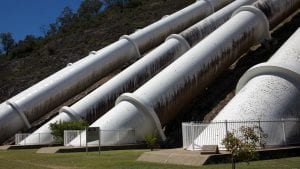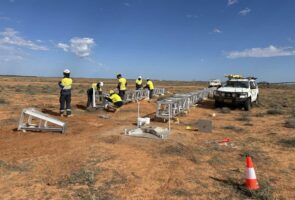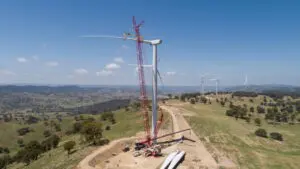Australia’s Coalition government may be more circumspect in how it plays the immigration and boarder security cards in light of the awful events in Christchurch, but it will show no such inhibition on its climate and energy scare campaign.
This week it is going full throttle on the supposed costs of Labor’s 50 per cent emissions reduction target, and 45 per cent renewables target, promoting a report from economist Brian Fisher from BAEconomics that claims outrageous and quite nonsensical costs from such action.
This “carbon apocalypse” modelling makes claims that Labor’s target would create a $472 billion hit to the economy, and up to $1.2 trillion without using Kyoto carryover credits; would slash real wages by $24,000 below where they would otherwise be; and cause the loss of 580,000 jobs.
The report is now peer reviewed, the government tells us, by a professor John Weyant, the director of the Energy Modeling Forum and Deputy Director of the Precourt Institute for Energy Efficiency at Stanford University.
And it seems perversely ironic and fitting that given the other major event of last Friday, the student strike on climate action, that the reviewer for the modelling the government has embraced should be a key witness in the Trump administration’s fight against a landmark climate lawsuit brought by children.
That lawsuit from Our Children’s Trust asserts that the government has violated the youths’ rights by allowing activities that harmed the climate, and seeks to compel the government to adopt methods for reducing carbon dioxide emissions. It echoes so much of what was expressed on the streets of hundreds of cities last Friday.
Weyant says he is getting paid $US650 an hour ($A916/hour to testify for the US government, (see page 2 of his deposition), and his role is to support the Trump administration’s claim that the transition from fossil fuels is not possible, and to defend the lack of action from Washington.
Weyant’s particular evidence has been to attack the modelling of leading US climate scientist Kevin Trenberth, and others, and to reject the climate change impact claims cited by various of the plaintiffs.
Armed with such a ringing endorsement, the Coalition government in Australia is taking no heed of what the students had to say on Friday, nor indeed the warnings from the Reserve Bank of Australia, and before them other central banks and financial regulatory authorities, and all major scientific organisations.
“We have got very credible modelling … it’s been peer reviewed by a Stanford academic …. we see that those costs are extreme and we can’t afford them,” energy minister Angus Taylor said on ABC Radio.
The modelling is, however, in the word of Labor and climate experts, complete garbage, which shouldn’t be surprising because Fisher himself has made much money since leaving his post at ABARE doing reports on behalf of the fossil fuel industry, and the Minerals Council of Australia in particular.
He was included in a list called “the dirty dozen” put together by researcher Guy Pearse and Clive Hamilton, and has worked for a variety of groups paid by the fossil fuel and mining industry to paint grim pictures of the economic consequences from government efforts to reduce carbon emissions.
Fisher, however, insists he did this report with no funding. (See below).
Still, little of the detailed assumptions underlying his conclusions have been revealed by Fisher in his latest update, apart from his assumptions on “storage” and “back-up”, which he puts at around $200/MWh.
These assumptions are important because his critics say he is grossly inflating the cost of abatement.
His estimates on the cost of storage are about three times more than the cost of “firming” revealed by Snowy Hydro and ignores reports from the CSIRO, the Australian Council of Learned Academies, the Australian Energy Market Operator, the Energy Networks Australia and any number of other researchers that show the level of storage needed up to 50 per cent renewables is minimal.
As Matthew Stocks, also from the ANU, told RenewEconomy, there is no additional balancing costs required to reach 50 per cent renewable electricity from wind and solar.
“Our peer reviewed work has shown the cost of storage, transmission and curtailment to balance a 100 per cent renewable electricity system is only an extra $25 per MWh while the cost of wind and solar today is already being installed at less than $50/MWh. 100% renewable electricity costs are expected to be lower than the average wholesale prices today.”
Fisher also makes absurd claims about the loss of coal generation even under the current government’s policy settings; some heroic understand about the role of gas in any other scenarios (tip, it’s bloody expensive and won’t be built to anywhere near the levels modelled in any of your scenarios); and appears to completely misunderstand energy storage.
When challenged about the storage costs on ABC Radio National, Taylor sought to downplay those concerns saying that electricity is just a small part of the equation (around 30 per cent of emissions), but Fisher’s own report says the costs of green technologies have a strong influence on “intertemporal abatement costs”, particularly in electricity and transport.
The ANU’s Frank Jotzo, a professor of policy and economics in climate change and energy, described the cost assumptions as “absurd.” “An abatement cost curve like this would have looked very high 20 years ago, now it’s simply ridiculous,” Jotzo said on Twitter.
 He also said: “The Fisher piece depicts an imaginary economy that is extremely inflexible and where clean tech comes at wildly higher costs than in reality. These shadow carbon prices are many times higher than even expensive backstop technologies, let alone the coal-renewables switch point.”
He also said: “The Fisher piece depicts an imaginary economy that is extremely inflexible and where clean tech comes at wildly higher costs than in reality. These shadow carbon prices are many times higher than even expensive backstop technologies, let alone the coal-renewables switch point.”  Warwick McKibbin, the economist who provided another significant report on behalf of Tony Abbott, and found there was little impact, tweeted that Fisher’s emission costs were a “factor of 10” higher than his own.
Warwick McKibbin, the economist who provided another significant report on behalf of Tony Abbott, and found there was little impact, tweeted that Fisher’s emission costs were a “factor of 10” higher than his own.
Still, the report won front headlines in The Australian, and front page headlines and near blanket, uncritical coverage in the Australian Financial Review, including by two columnists who should know better – page 2’s Jennifer Hewett and political editor Phillip Coorey, neither of whom mention Fisher’s track record or bothered to check out the credentials of the peer reviewer.
Jotzo suggested that “before featuring this research on the front page of the national newspaper, it would be useful to know that the assumptions don’t make sense.”
The Fisher modelling was condemned by legions of other climate and energy experts, such as Tim Baxter, who compared it with other modelling and abatement curves.
“This is the foundation of everything in his work. Every talking point comes back to this curve. And it is very, very wrong. Not even close to reality. Every talking point, every sound bite that comes from it can be ignored. This doesn’t even approximate serious work
Compare this to a pretty conservative MAC curve from @energetics_au.
Source: https://t.co/KZJtlui8XX pic.twitter.com/7btj5KZOQN — Tim Baxter (@timinmitcham) March 18, 2019
First, Fisher outright ignores the huge amount of cost negative abatement opportunities we have in Australia. This is well-documented stuff. We have huge unrealised potential to save money *and* reduce emissions. There is upwards of 100Mt/year.
— Tim Baxter (@timinmitcham) March 18, 2019
Second where is the detail? For Reputex and Energetics, you can get at the detail, though some of it is paywalled. You can test every sum.
Also, note the shape of the curve. It isn’t smooth and regular because *of course* it isn’t. — Tim Baxter (@timinmitcham) March 18, 2019
This is the foundation of everything in his work. Every talking point comes back to this curve. And it is very, very wrong. Not even close to reality. Every talking point, every sound bite that comes from it can be ignored. This doesn’t even approximate serious work.
— Tim Baxter (@timinmitcham) March 18, 2019
Oliver Yates, the former head of the Clean Energy Finance Corporation, and now challenging former energy minister and now deputy Liberal leader Josh Frydenberg in the seat of Kooyong, said the modelling was a joke.
“This report models +$100 a tonne, but caps renewables at 50 per cent. No wonder the costs blow out. You would have to be having a laugh to suggest that renewables would only be at 50% by 2030 with a $100 carbon price.”
Note: The Fisher report is being actively promoted by the right-wing Menzies Research Centre, headed by the former editor of the Weekend Australian and climate skeptic Nick Cater.
We asked Fisher, the Menzies centre and Taylor’s office where the funding for the report came from.
Fisher replied:
“Hi, I have done the modelling myself with no support from anyone else.
“The reason I’ve done it is that I think is it is time that we had a transparent debate about policies and costs and among other things I am trying to make the point that a market based instrument such as an emissions trading scheme is a lot cheaper way to achieve a given target than regulation for example.
“This point has been made hundreds of times in the economic literature but is lost in the political debate.”








